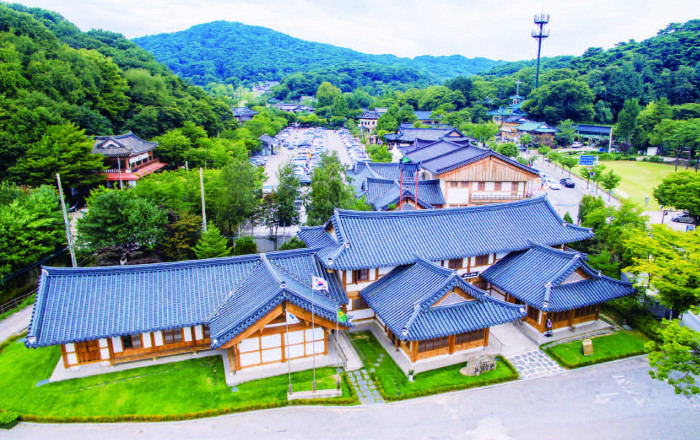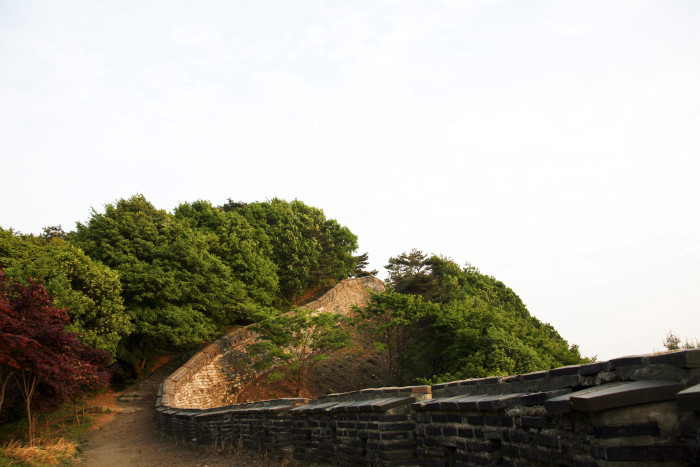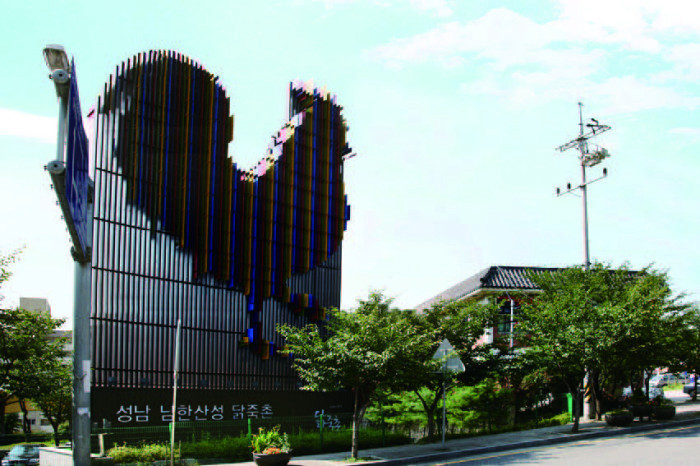경기문화재단
World Heritage Namhansanseong
The sights of Namhansanseong (3)
"Stories on the Road" is a story about a UNESCO World Heritage site and a story. It will tell you the life and spirit of our ancestors in the ancient road of The old Namhansanseong path. |
Recreation area

Namhansanseong World Heritage Centre, Gyeonggi-do
“From Sanseong village’s time of suffering to becoming a world heritage”
Do you know that Namhansanseong Fortress was a recreation area? People had considered Namhansanseong Fortress a leisure area since the Japanese occupation period. How did this come about? Though the abolition of Gwangju Yusubu and the dismantling of the Joseon army led to the city’s loss of functions as a military center, its functions as the administrative center remained steadfast until 1916. Thanks to this, many people still traveled to and from Namhansanseong Fortress to conduct anti-Japanese campaigns and independence movements. However, in 1917, the Japanese government relocated the Gwangju-gun Office to Gyeongan-dong in order to diminish the meaning of Namhansanseong Fortress as an administration hub. From this point, Namhansanseong Fortress began to be recognized as a kind of place to go for leisure activities such as historical and cultural exploration, mountain climbing, and romantic outings. Namhansanseong Fortress, which was rapidly opened as a resort for citizens after the Korean War, then began to be developed by the Rhee Syng-man regime as a recreation area near Seoul. A new turning point of Namhansanseong Fortress came in March 1971 when it was designated as a provincial park. From this period, Namhansanseong Fortress has been regarded as a “tourist attraction where cultural assets and nature can be enjoyed”. This eventually led to its registration as a UNESCO World Heritage in 2014.
Old Namhansanseong path hiking course

“What is so special about the Namhansanseong hike?”
What is so special about Namhansanseong Fortress, which has been loved by many hikers since the era of the Japanese occupation? Namhansanseong is a fortress built linking three mountains. Namhansan Mountain (552 m), the highest peak of Namhansanseong Fortress, is famous as a place where residents of the southern part of the metropolitan area welcome the first sunrise of the New Year. According to the opinion of numerous hikers, both Namhansan and Cheongnyangsan mountains are excellent places to watch the sunrise. In addition to mountain climbing, you can also enjoy the cultural heritage of Namhansanseong Fortress by visiting its cultural treasures. Namhansanseong Fortress, which features numerous hiking routes and outstanding natural scenery, has been consistently cherished by hiking lovers since the Japanese occupation period and through the Korean War, the economic growth period after the 1970s, and even until now. Named as a World Heritage in 2014, Namhansanseong Fortress has attracted numerous citizens thanks to its diverse cultural assets, well-preserved natural environment, and convenient accessibility from Seoul and other cities in the metropolitan area.
Dakjuk (Chicken Porridge)

Entrance to Namhansanseong Dakjuk Village
“Dakjuk, a 40-year tradition”
In the modern era, with Namhansanseong Fortress losing its status as an administrative and military city, its characteristic as a city of consumption also simultaneously deteriorated, leading to the gradual weakening of marketplaces within the city. Residents who wanted to continue their lives in Namhansanseong Fortress during this period of change had to find a new means of livelihood. In the meantime, Namhansanseong Fortress came to be seen as a nice place for outings not far from Seoul, with its beautiful natural scenery and historic cultural resources. Since then, Namhansanseong Fortress attracted attention as a tourist destination, a phenomenon further encouraged by the Japanese empire. At this time, the residents who did not leave and continued to live within the fortress began to open restaurants for tourists. In particular, dishes like dakjuk, or chicken porridge, became popular, as well as dakbaeksuk, or whole chicken soup, which could be cooked quickly after simply catching a chicken. The chicken dishes grew to be especially well-known among tourists as food to be enjoyed in the forests and valleys of Namhansanseong Fortress. The restaurants that relocated from their old locations to reopen are all still welcoming many guests with generosity and hearty food under the title of Dakjuk, a 40-year-old tradition in Namhansanseong Fortress.
<ggc의 모든 콘텐츠는 저작권법의 보호를 받습니다.>
세부정보
Stories on the Road
Published by/ Namhansanseong World Heritage Centre, Gyeonggi-do The Center for Gyeonggi Studies, Gyeonggi Cultural Foundation
Published on/ November 24, 2017
Supervised by/ Lee Ji-hoon, Director of the Center for Gyeonggi Studies, Gyeonggi Cultural Foundation
Planned and coordinated by/ Chae Chi-yong, Senior Researcher at the Center for Gyeonggi Studies, Gyeonggi Cultural Foundation Park Da-seul, Researcher at the Center for Gyeonggi Studies, Gyeonggi Cultural Foundation